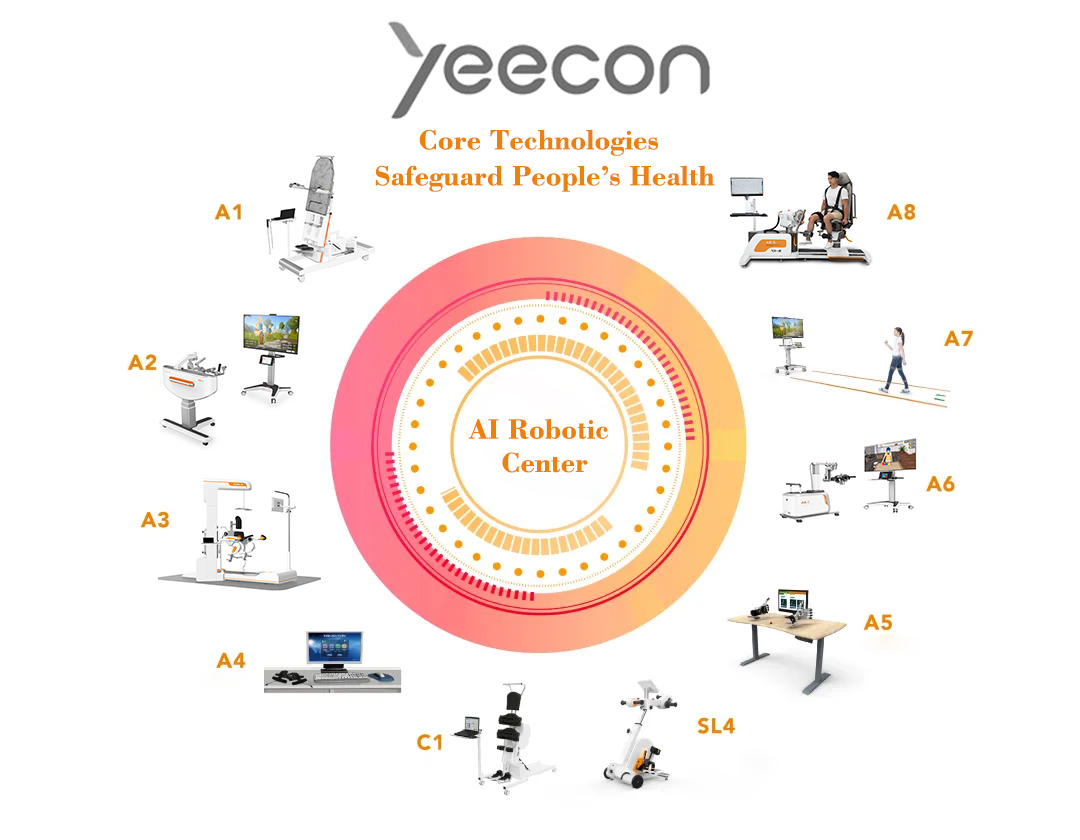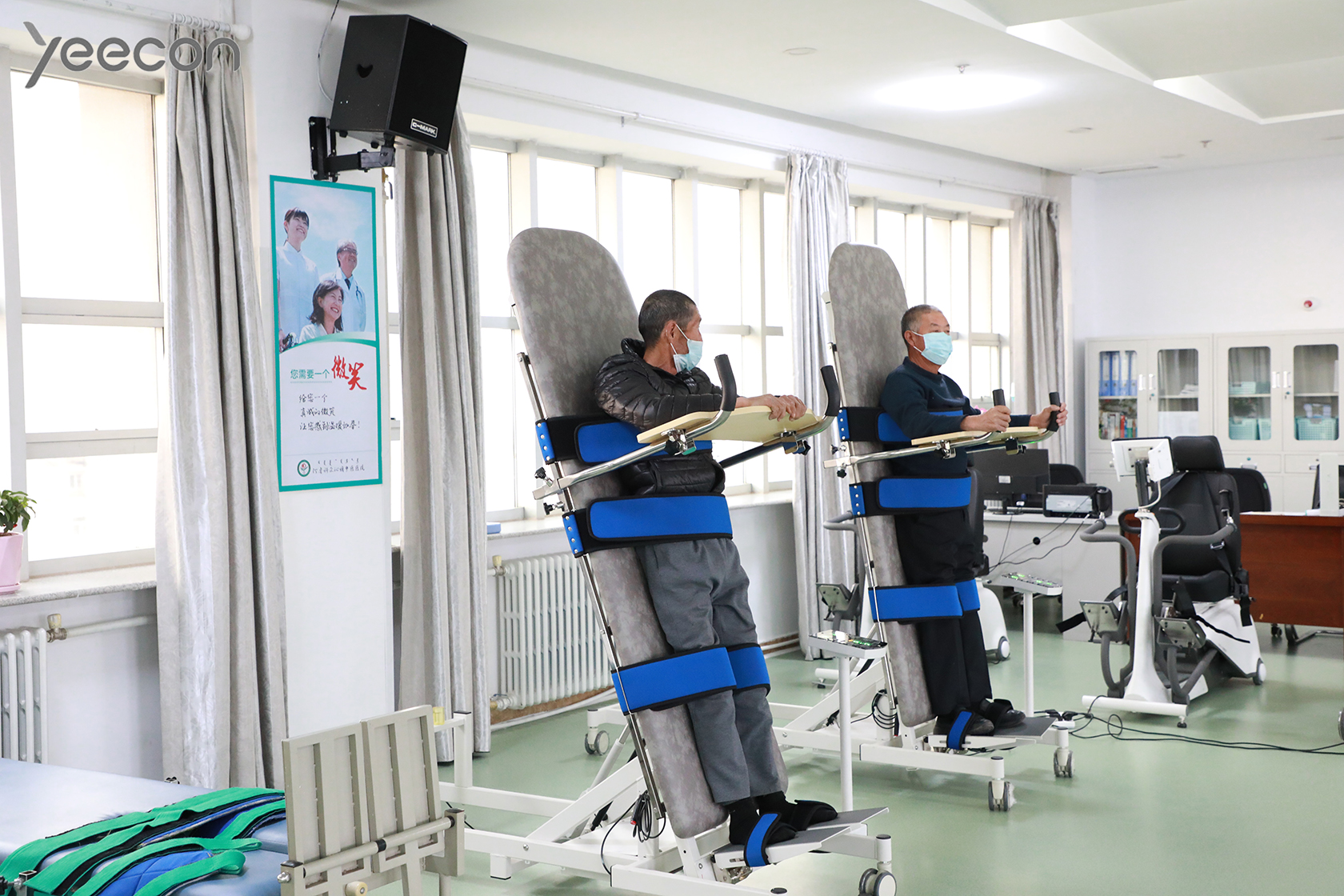Effective Robotic Rehabilitation Equipment for Lower Limb Dysfunction
Using modern rehabilitation equipment in rehabilitation treatment is conducive to raising patients’ initiative and improving treatment diversity. Moreover, it helps to reduce the labor intensity of therapists and free their hands to take care of more patients at the same time. This contributes to solving the problem of rehabilitation professionals shortage. Here we are introducing two of the effective robotic rehabilitation equipment for lower limb dysfunction rehabilitation.
1. Automatic Tilt Table YK-8000E (Verticalizer)
Automatic tilt table is applicable to patients at the early post-stroke stage and patients whose lower limbs are not able to bear load. At the early post-stroke period, there’s a decline in patient’s blood pressure regulation ability due to long time bed-rest. If they sit up from the bed suddenly, postural hypotension tends to occur, which brings about symptons like dizziness and cold sweat. At this time, through the use of tilt table, patients will gradually get used to the change in position. Through standing practice assisted by the tilt table, patients’ postural hypotension can be relieved. Tilt table is also applicable to the early stage after lower limb fracture operation. At the early post-operation stage, proper load bearing is beneficial to the healing of fracture. Moreover, using tilt table for standing practice can also improve patients’ cardiopulmonary function, endurance and lower limb strength.
2. Gait Training & Evaluation System A3 (Gait Robot)

Patients with spinal cord injuries are unable to stand or walk on their own. They spend most of the time in a wheelchair, facing the risks of deep venous thrombosis of lower limb, osteoporosis and heterotopic ossification. For patients whose injury level is not very high, these complications can be prevented by taking some walking training. Normally, they carry out such rehabilitation training with the help of lower limb rehabilitation robots.
The gait training robot will lift the patient with a deweighting unit to reduce the load-bearing of patient’s lower limbs. Then appropriate training intensity will be set by the therapist. With the assistance of the intelligent mechanic legs, patient’s legs will be driven to walk in a normal gait pattern. The gait robot helps patients to stretch the muscles and improve the circulation through rhythmic walking training with a fixed trajectory. In this way, deep venous thrombosis of lower limb and heterotopic ossification can be prevented. Proper load bearing of the lower limb during training is conducive to the prevention of osteoporosis and urinary system infection caused by long time bed rest. For patients with spinal cord injuries, standing up and walking can significantly boost their confidence in recovery.
This training is applicable to the rehabilitation treatment of patients with spinal cord injury, hemiplegia after stroke, and brain trauma. The repetitive walking training reinforces the normal gait memory, enhances brain’s control over body and improves abnormal gait, and therefore the risk of falls can be reduced.
Yeecon is a leading manufacturer of rehabilitation equipment in China since 2000. With over 20 years of experience, we’ve been developing and producing rehabilitation equipment including physical therapy devices and rehabilitation robotics for upper extremity, lower extremity, hand function, etc. Apart from developing and manufacturing rehab equipment, Yeecon also provides overall solutions for the planning and construction of rehabilitation medical centers. If you are interested in purchasing our equipment or working with us to establish new rehabilitation centers, please feel free to contact us. We look forward to cooperating with you.

Read more:
Advantages of Rehabilitation Robotics
Limb Function Training for Stroke Hemiplegia
Robotics for Early Walking Function Re-Establishment
Post time: Dec-28-2021







